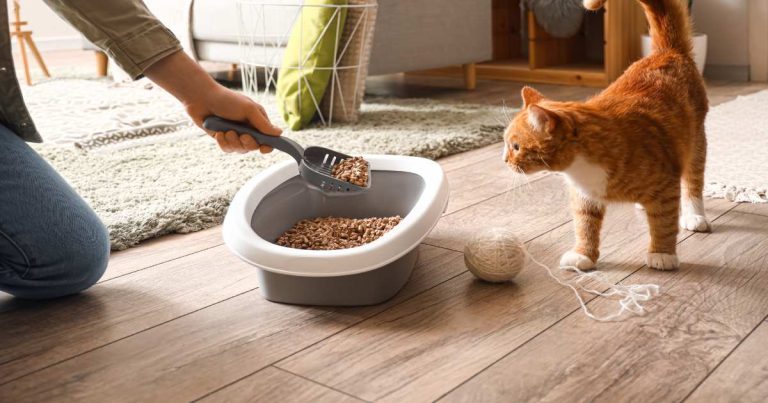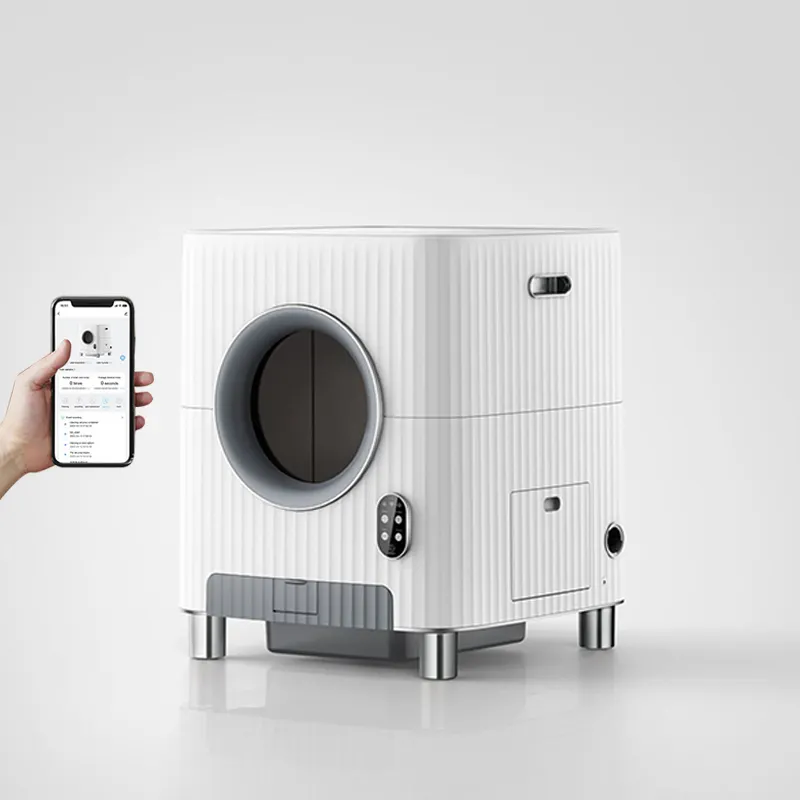Have you noticed your feline friend displaying some unusual behavior around the litter box? It might not just be the usual cat quirks; your kitty could be trying to communicate a discomfort with the litter. Let’s embark on a journey to unravel the subtle signs and solutions for a potential litter allergy.

Signs of Litter Allergies
Sniffles and Sneezes
Just like us, cats can have allergies too. If you notice your cat sneezing or having a runny nose when near the litter box, it might be a sign that something in their litter is causing irritation.
Itchy Business
Watch out for excessive scratching. If your cat seems to be itching more than usual, especially around their paws and lower body, it could be a red flag for a litter-related allergy.
Unwanted Bathroom Surprises
Changes in your cat’s litter box habits are crucial indicators. If you spot your feline friend avoiding the box, having accidents outside it, or displaying signs of discomfort during bathroom breaks, it’s time to investigate.
Common Allergens in Cat Litter
Dusty Dilemmas
Dusty litters might be convenient for humans, but for cats, they can be a respiratory nightmare. Consider opting for low-dust or dust-free litters to minimize the risk of allergic reactions.
Fragrance Foes
Artificial fragrances might appeal to our olfactory senses, but they can trigger allergies in our feline companions. Choose unscented or lightly scented litters to avoid overwhelming your cat’s delicate nose.
Material Matters
Cats can be picky about textures. Some might develop allergies to specific litter materials like clay or silica. Experiment with alternative materials like corn, wheat, or recycled paper to find the perfect match for your discerning feline.
Consulting the Experts: Veterinary Guidance
Vet Visits: A Wise Choice
If you suspect your cat is allergic to their litter, it’s time for a visit to the vet. A professional can help rule out other health issues, identify specific allergens, and recommend suitable alternatives.
Allergy Testing for Cats
In some cases, vets may recommend allergy testing to pinpoint the exact triggers. This can involve blood tests or elimination diets to identify and remove specific allergens from your cat’s environment.
Litter Alternatives and Allergy Management
Allergy-Friendly Litters
Explore hypoallergenic cat litters designed to minimize potential allergens. These litters often prioritize natural materials and avoid common irritants, providing a comfortable bathroom experience for your cat.
Gradual Introductions
Switching litters abruptly can be stressful for your cat. Introduce new litters gradually, mixing them with the old to give your feline friend time to adjust without feeling overwhelmed.
Monitoring and Adjusting
After making changes, closely monitor your cat’s behavior. If symptoms persist or worsen, consult your vet to discuss further adjustments to your cat’s litter and overall environment.
Upgrade Your Cat’s World with the 86L Automatic Litter Box
Say goodbye to traditional litter boxes and hello to the future of feline care! The 86L Automatic Cat Litter Box is not just a convenience; it’s a revolution in pet ownership. Here’s why every cat owner needs to consider this smart litter box:
Features:
- Safety First: Cat-friendly design prevents entanglements.
- Smart Surveillance:Monitor your cat with intelligent video.
- Odor-Free: Negative ion deodorization for a fresh home.
- Remote Control: Manage via the app with 5G Wi-Fi support.
- Multi-Cat Recognition:Tailored experience based on weight.

Conclusion
Understanding your cat’s needs and potential allergies is key to ensuring a harmonious relationship with their litter box. By paying attention to subtle signs, investigating potential culprits, and seeking professional guidance, you can create a comfortable, allergy-free environment for your feline companion. After all, a happy cat makes for a happy cat owner!
